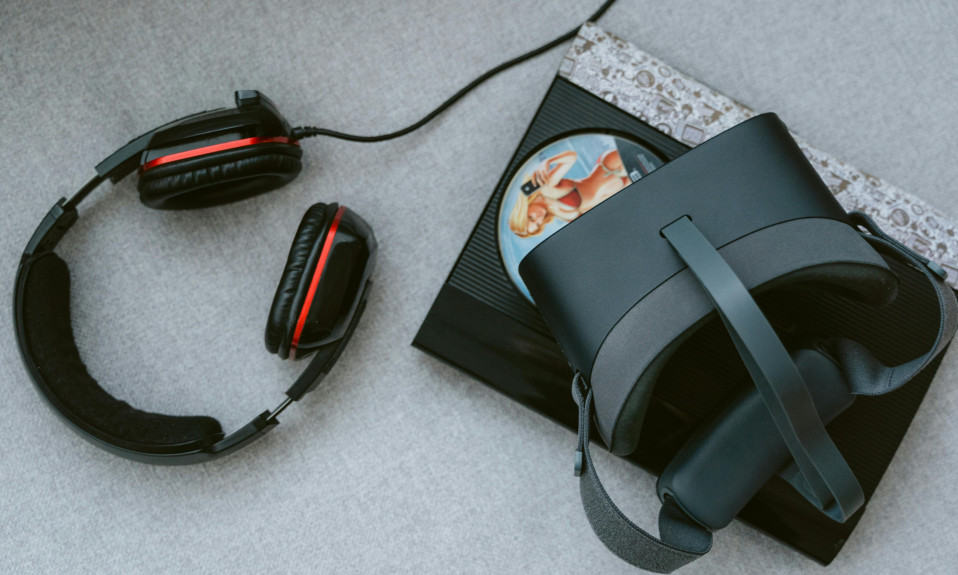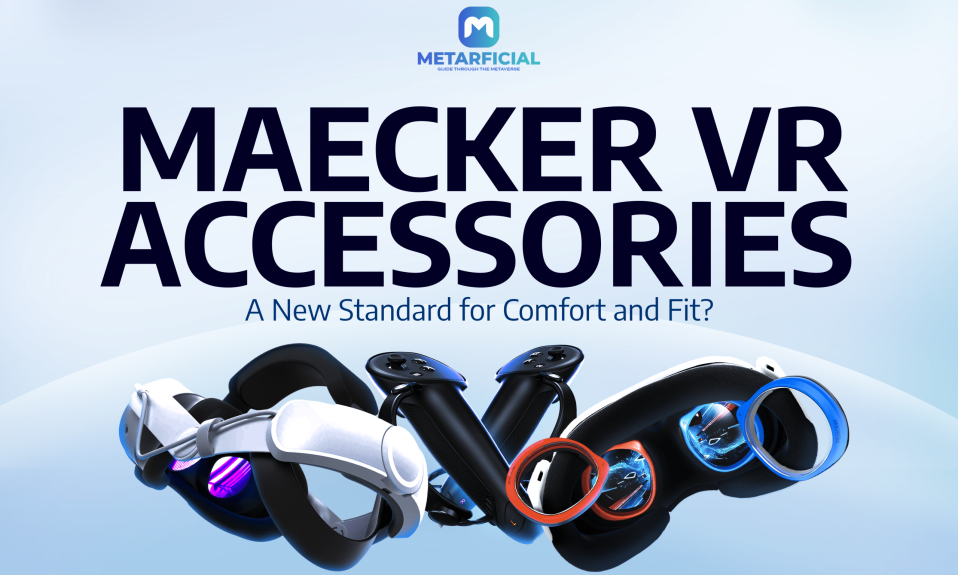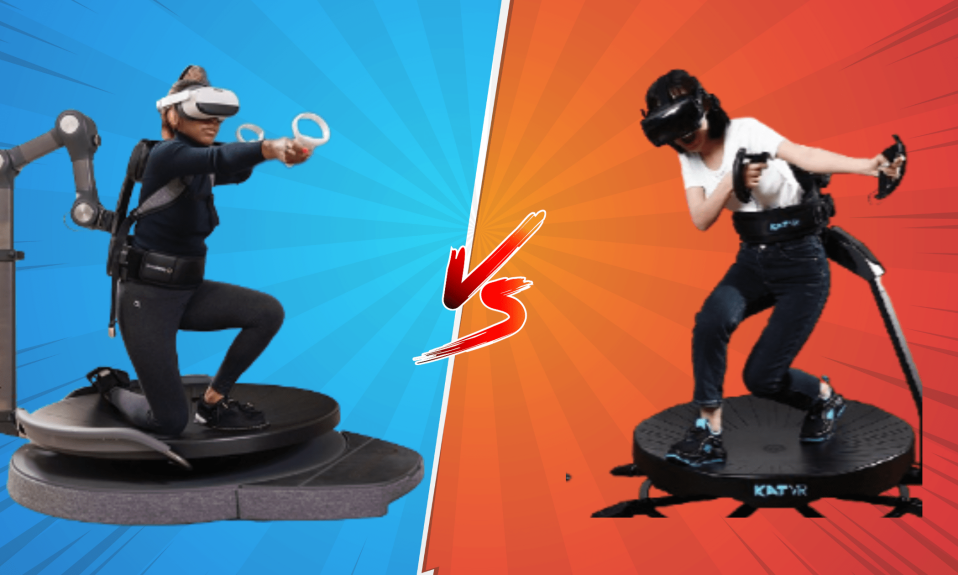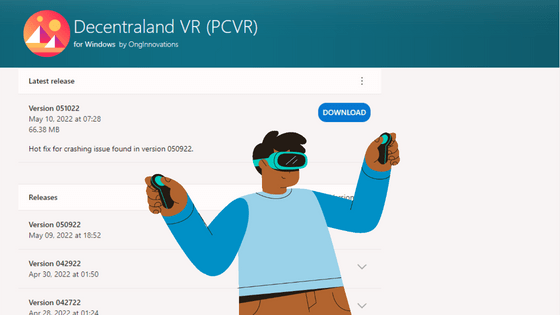Prolonged use of virtual reality often results in discomfort, disorientation, and several health considerations.
Having the right VR accessories can make all the difference in eliminating friction and enhancing comfort, usability, and immersion in VR.
Common issues associated with extended VR use include motion sickness, neck strain, uneven weight distribution, skin irritation, and sweat accumulation.
While tech giants and large corporations are aware of these glaring concerns, they often prioritize investments in developing the next revolutionary VR tech and hardware, asserting their dominance in the race to build the metaverse.
However, several brands address these concerns by developing VR accessories that enhance the overall user experience and complement VR devices.
This article is a comprehensive breakdown of the essential VR accessories kit needed to explore virtual reality and the metaverse.
Without further ado, let’s get started.
I do not want a discount, said no one ever! Upgrade your VR setup today with top-tier accessories—use code META20 for 20% off + free shipping on orders over $15. Level up your VR experience now ➡️ Shop & Save!
Quick Navigation
What are the Accessories Needed for Virtual Reality?
From VR headsets to hand controllers, haptic vests, head straps, and omnidirectional treadmills, keeping up with the latest VR devices and accessories is daunting.
Users must consider the kinds of virtual experiences that appeal to their interests before purchasing VR accessories of any sort.
It helps streamline the purchase journey, as VR platforms typically specify the hardware requirements and accessories needed for enhanced feelings of presence and immersion in VR.
Some experiences may require using gun stocks, haptic gloves, and VR treadmills, while others require only the good old VR headsets and hand controllers.
But regardless of individual preferences, essential VR accessories toolkits are needed for comfort, immersion, and less friction in VR.
The essential VR accessories kit needed for VR includes VR facial interface covers, adjustable head straps, external headphones, battery packs, controller grips or covers, and active cooling systems.
Virtual Reality Facial Interface Covers:
Consumer-grade VR headsets, like the Meta Quest and the Valve Index, are equipped with facial interface covers made of foam-like materials for added comfort while strapped to users’ faces.
Facial interface covers also serve other purposes, including sweat absorption, hygiene maintenance, and protection of VR lenses from scratches or damage.
Some users, however, experience certain drawbacks while using the default or stock VR facial interface covers included with VR headset purchase.
These drawbacks include sweat and bacteria accumulation, itchiness, skin irritation, and interference from external light sources.
Third-party VR facial interface covers help mitigate these downsides and unpleasant occurrences.
Several third-party facial interface covers employ skin-friendly, moisture-wicking, and breathable foam-like materials to prevent sweat and bacteria accumulation, skin irritation, light leakage, and other potential drawbacks.
The BOBO VR and KIWI Designs provide the most popular alternatives for default or stock VR facial interface covers.
I do not want a discount, said no one ever! Upgrade your VR setup today with top-tier accessories—use code META20 for 20% off + free shipping on orders over $15. Level up your VR experience now ➡️ Shop & Save!
Virtual Reality Head Straps:
Adjustable virtual reality head straps are a must-have for enhanced comfort and convenience during the extended use of VR headsets.
Not only do they hold VR headsets in place, but they also help to reduce pressure points and redistribute the weight of VR headsets.
But similar to facial interface covers, several users also encounter drawbacks and potential downsides with default VR head straps.
The use of non-durable materials, breakage caused by non-flexible straps, and uneven weight distribution are some of the challenges that users face.
Hence, several users opt for third-party VR head straps that employ flexible materials, redistribute weight evenly, incorporate counterweights for balance, and support customization to suit various head sizes.
Some third-party head straps also provide built-in rechargeable or detachable batteries that extend the battery life of VR headsets.
The Meta Quest 2 Elite Strap, BOBO VR M2 Plus, and KIWI Design Head Straps are three popular alternatives for default VR head straps.
Virtual Reality Controller Grip Covers:
VR controllers are essential devices that support user inputs and interactions with objects and experiences within virtual environments.
They serve as digital replicas of the human hands and aid positional tracking and orientation in VR.
Nevertheless, these devices have their limitations, drawbacks, and potential downsides.
During use, VR controllers may occasionally slip off one’s grips, flying into the air like projectiles, damaging themselves and nearby objects.
Other times, they accumulate sweat, dust, and debris that causes discomfort, sweat accumulation, and VR controller drifts.
Third-party VR controller grip covers are developed with ergonomic designs to support better grip while preventing sweat, dust, and debris accumulation.
Some VR controller grip cover models include built-in adjustable straps that enable controllers to hang freely or stay fastened to users’ hands during gameplay.
The AMDZM Grip Cover and the KIWI Design Upgraded Controller Grips Cover are popular alternatives for VR controller grip covers.
I do not want a discount, said no one ever! Upgrade your VR setup today with top-tier accessories—use code META20 for 20% off + free shipping on orders over $15. Level up your VR experience now ➡️ Shop & Save!
External Rechargeable Battery Packs:
Recently, the pivot from PCVR to standalone VR headsets has become a noticeable trend among consumer-grade VR headset providers.
Complex VR setups that require multiple devices, power gaming computer systems, external sensors, and trackers get replaced by single compact devices.
However, the pivot to standalone VR headsets comes with its trade-offs, one of which includes limited battery life.
Though the specific model, usage pattern, and battery capacity contribute to battery life, the average battery life per full charge for standalone VR headsets spans 2 to 3 hours.
Despite adequate maintenance and supervised charging cycles, built-in VR headset batteries deteriorate over time.
External rechargeable battery packs are must-have VR accessories for extended battery life, less friction, and seamless VR experiences.
Some models of VR head straps include built-in rechargeable batteries that serve as an external power source and counterweight to VR headsets.
Active Cooling Systems:
Prolonged use of virtual reality devices often causes overheating, general discomfort, sweat accumulation, and deterioration of VR equipment.
Every standard VR accessories kit should include active cooling systems to mitigate adverse effects and potential downsides of extended VR use.
Aerated rooms or playable spaces with cooling fans and active air conditioning units can help dissipate heat and regulate the room temperature.
Users should opt for VR accessories made with breathable materials and built-in ventilation systems that help to dispel the heat and improve the overall performance and lifespan of VR devices.
VR Compatible Headphones:
Audio feedback plays a significant role in immersion within virtual environments. Mismatch between visual and audio inputs can have adverse effects such as motion sickness.
Virtual reality headsets, by default, include a pair of built-in speakers to render audio outputs for users in VR.
Several users, however, opt for external VR-compatible headphones or earphones for better audio feedback and an enhanced sense of presence and immersion in virtual reality.
External audio feedback accessories that support wired connections are preferable, as Bluetooth latency can impact audio and visual synchronization in VR.
Final Thoughts on VR Accessories
VR accessories are add-on devices that enhance the sense of presence, feelings of immersion, and the overall user experience within virtual reality.
The appropriate VR accessories tool kit helps mitigate the drawbacks and downsides of using default or stock VR accessories.
From skin irritation to sweat accumulation, limited battery life, or unevenly distributed weight, some accessories provide solutions for these problems.
On the flip side, having a complete VR accessories toolkit can be taxing, as it may involve purchasing different hardware components from various vendors before piecing them all together.
But in the long run, these accessories make all the difference by significantly reducing friction and enhancing usability and immersion in virtual reality.
I do not want a discount, said no one ever! Upgrade your VR setup today with top-tier accessories—use code META20 for 20% off + free shipping on orders over $15. Level up your VR experience now ➡️ Shop & Save!










